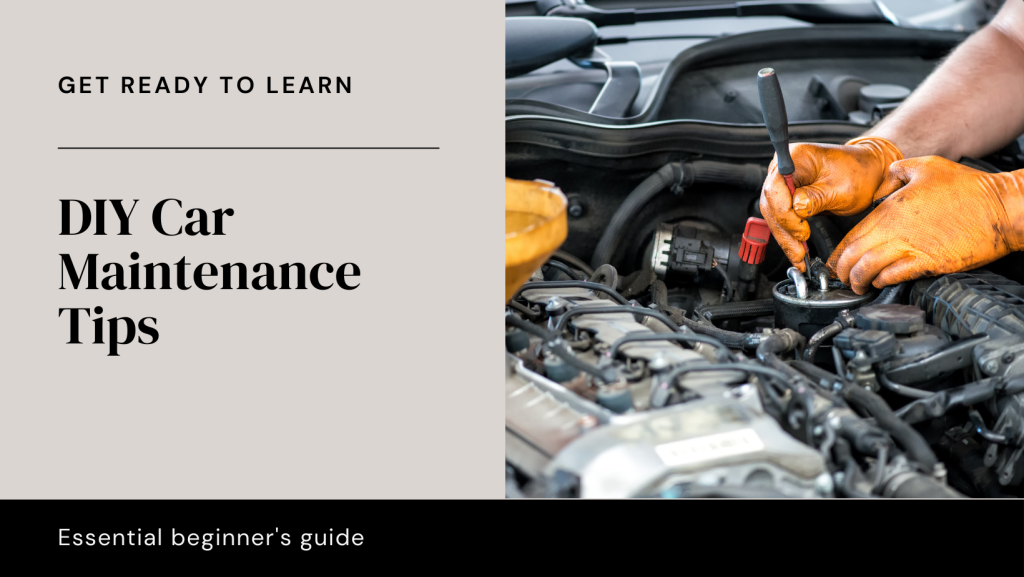Learning basic car maintenance tasks can empower you to take better care of your vehicle and save money on routine servicing. This article provides practical DIY car maintenance tips for beginners, covering simple tasks that can be performed with basic tools and a little know-how.
- Changing Engine Oil: Start by locating the oil drain plug and oil filter under your car. Use a wrench to remove the drain plug and drain the old oil into a container. Replace the drain plug, change the oil filter, and refill with new oil according to your manufacturer’s specifications.
- Replacing Air Filters: Air filters prevent dirt and debris from entering the engine, improving performance and fuel efficiency. Locate the air filter housing, usually near the engine bay, and replace the filter by unclipping the housing, removing the old filter, and inserting a new one.
- Checking and Topping Off Fluids: Regularly check fluid levels including coolant, brake fluid, transmission fluid, and windshield washer fluid. Use a dipstick or reservoir markings to determine fluid levels and add more as needed. Consult your owner’s manual for fluid specifications and safety precautions.
- Inspecting and Rotating Tires: Inspect tire tread depth and condition regularly. Use a tread depth gauge or the penny test to ensure tires have adequate tread for safe driving. Rotate tires according to your owner’s manual to promote even wear and extend tire lifespan.
- Replacing Wiper Blades: Wiper blades should be replaced annually or as soon as they streak or leave residue on the windshield. Lift the wiper arm away from the windshield, press the release tab on the blade, and slide it out of the hook. Install new blades by reversing the process.
- Checking Battery and Connections: Inspect the car battery for signs of corrosion or damage. Clean battery terminals with a wire brush and baking soda solution to remove corrosion. Ensure terminals are securely connected and tighten any loose connections.
- Inspecting Lights: Regularly check all exterior lights including headlights, brake lights, turn signals, and taillights. Replace bulbs as needed to ensure visibility and compliance with traffic laws.
- Basic Tools and Safety Gear: Invest in basic tools such as a socket set, screwdrivers, pliers, and a jack with jack stands for safely lifting and supporting your vehicle. Wear gloves and safety glasses when performing maintenance tasks to protect against dirt, oil, and sharp edges.
By gaining confidence in these basic DIY car maintenance tasks, you can take a more proactive approach to caring for your vehicle. Start with simple tasks and gradually expand your skills to tackle more advanced maintenance as you become more comfortable working on cars. Regular upkeep not only saves money but also ensures your car operates efficiently and safely on the road.

